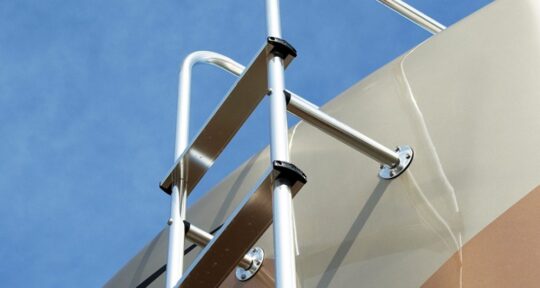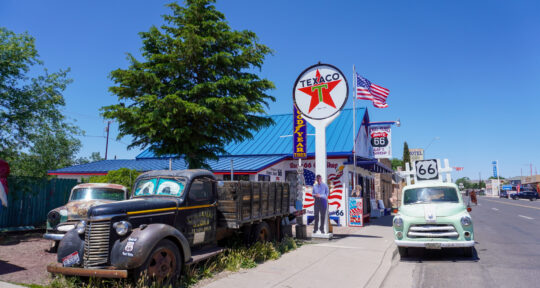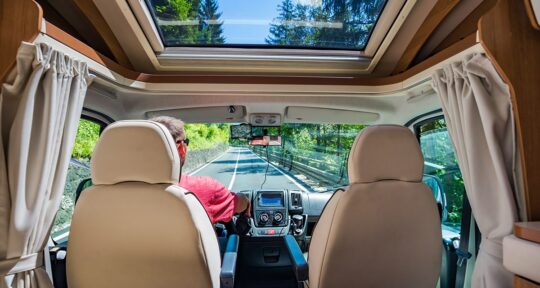The most scenic mountain drives are also sometimes the most harrowing. Steep grades with hairpin curves, drop-offs, and little or no guardrails are pretty common, especially out west. Here are some tips on how to safely and tranquilly get to the top of the world—and back down.
Before you go
Get a tune-up
Mountain driving is demanding on vehicles, so before you head for the hills, give your vehicle a mechanical once-over to make sure of the following:
- Brakes and battery are in good working order
- Fluids are topped off, including oil, transmission, coolant, and windshield washer fluid
- Tires are properly inflated, with decent tread and a working spare
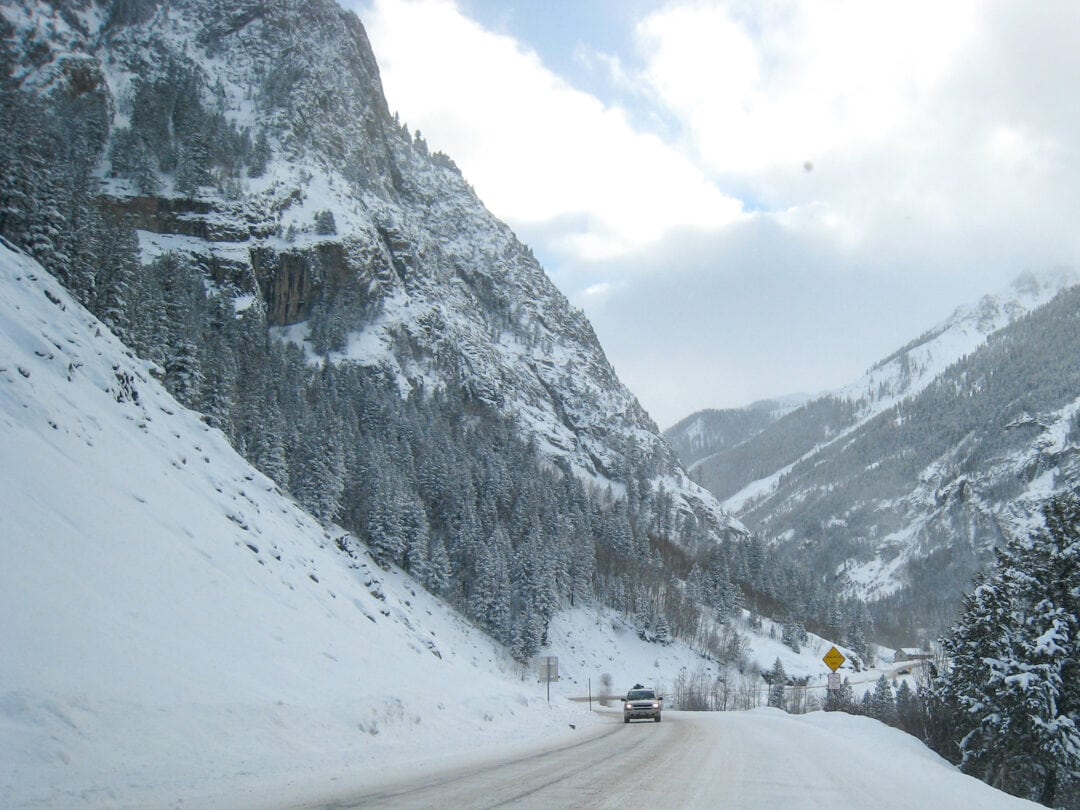
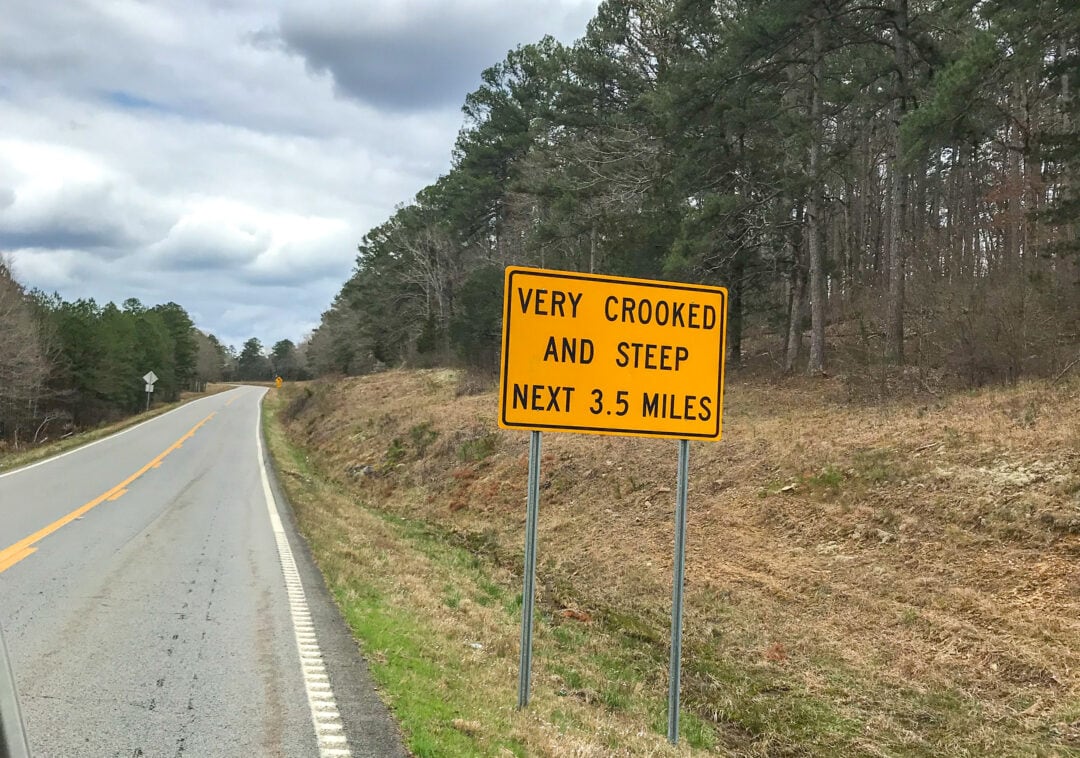
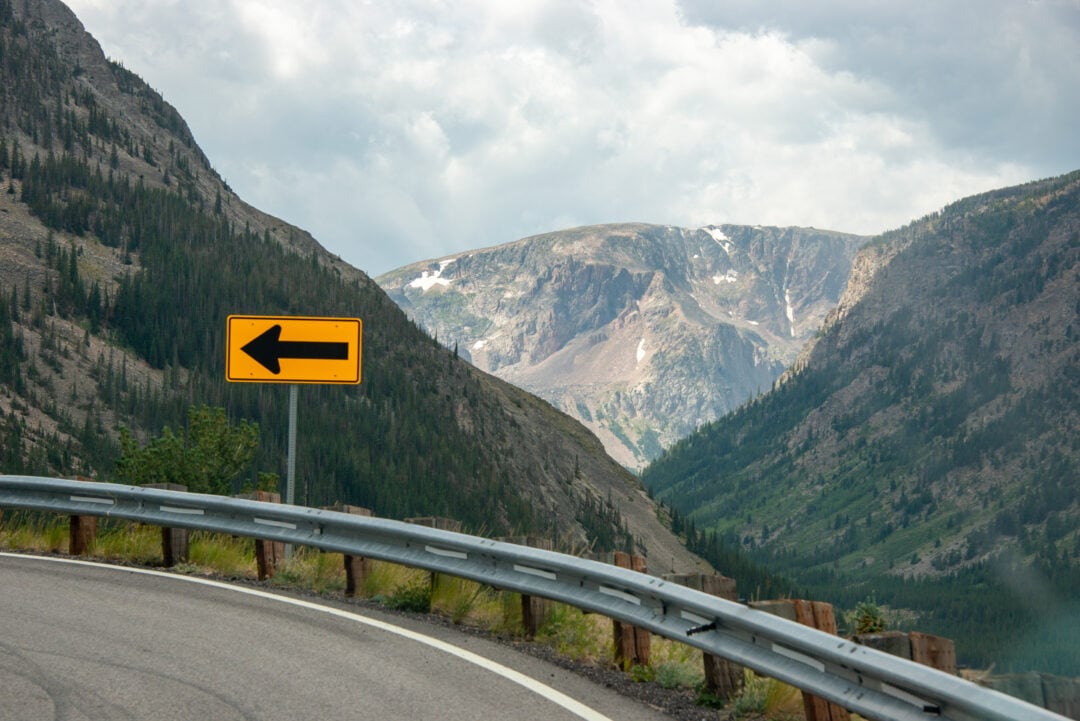
Plan for the unexpected
Mountains are remote and unpredictable. A sudden storm or accident that blocks a narrow road can leave you stranded for extended periods. Prepare for emergencies by bringing supplies such as food, water, warm clothing, tools, first-aid, and other safety gear. Also let someone know where you’re going, so they can notify authorities to look for you if you don’t check in.
Everything you need to know to plan a safe (and fun) road trip
Bring paper maps
It’s common to lose cell and even GPS service in the mountains, so have an atlas with you and familiarize yourself with your route before you leave. If you map directions out on your smartphone, they’ll probably still work even if you lose service, but if you accidentally close your app, or need to adjust the route, you might lose them. Also, if you’re in an RV or towing a trailer, make sure your route doesn’t include length- and width-restricted roads, or grades that are too steep for your driving comfort level.
How to plan a safe and fun RV route with a big rig
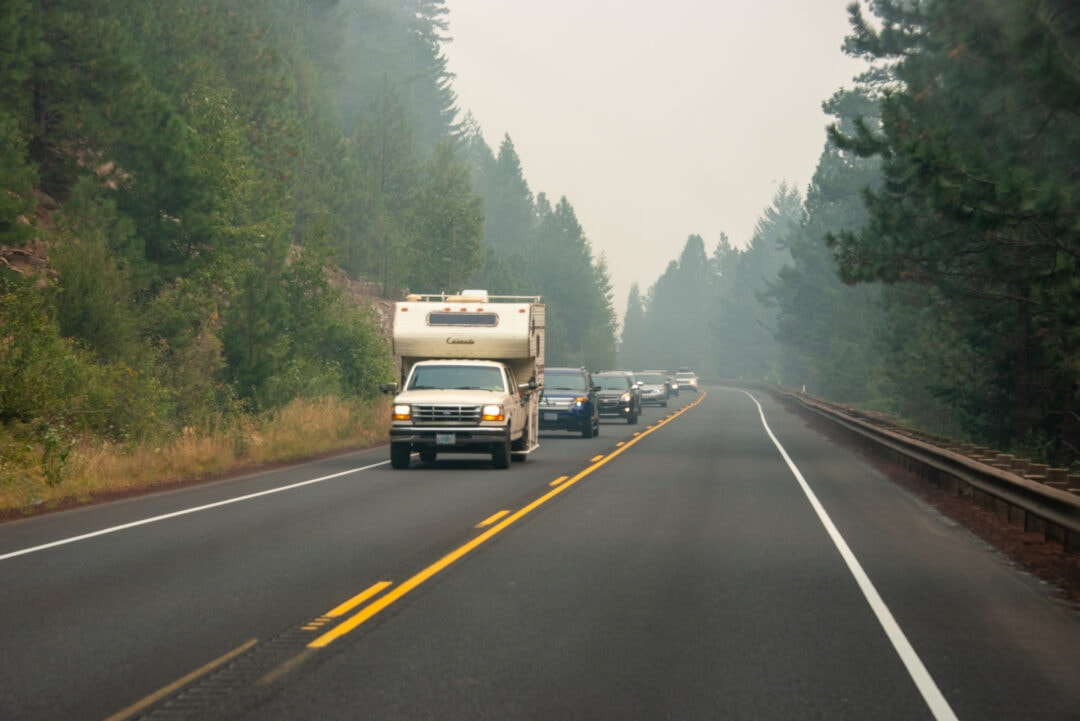
On the road
Pull over
This is at the top of the list because it’s vital to safety, but usually only gets a quick mention. If you’re not used to driving in the mountains, chances are you’ll be going slower than others on the road. So when you get two or three cars behind you, find a safe, legal place to pull over and let traffic pass by. This is important because:
- People behind you will become impatient and eventually try to pass you in unsafe places.
- A line of cars in the rearview mirror can be stressful, making the drive less enjoyable.
- Trying to compensate by driving faster than your skill level also creates a dangerous situation.
- Pulling over is courteous and makes everyone’s day a little less aggravating.
Drive sanely
Conversely, if you happen to be behind someone driving slower than you, wait until you have clear visibility and plenty of room to safely pass them.
Descending
Brakes can heat up and fail in any vehicle, but especially if you are in an RV or towing a trailer. This is a terrifying situation to be in, but there are several ways to prevent this:
- Don’t ride your brakes. Instead use quick taps so they have time to cool off between slow downs.
- Anticipate steep turns by breaking before you get to them.
- Shift to a lower gear for downhills, which puts some of the braking job on the engine and transmission.
- Keep a consistent slower speed, instead of accelerating on the straightaways and then having to brake for the corners.
- If your brakes start to get mushy or you can smell them, pull over for 10 to 20 minutes to let them cool down.
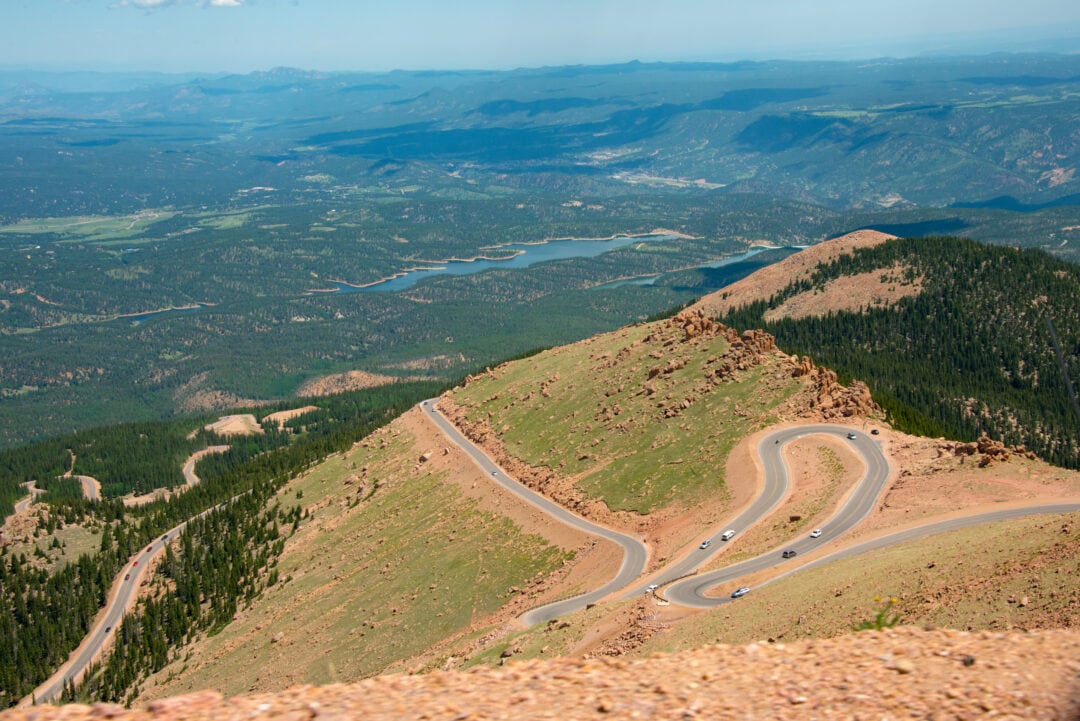
Ascending
High altitudes and steep uphill grades diminish your engine’s power, so you might not have the acceleration that you’re used to. Another common problem heading uphill is overheating. Here’s how to prevent it:
- Downshift so you have ample RPMs to maintain a consistent speed.
- Turn off the air conditioning (mountain air is much more pleasant anyway).
- If your engine is still too hot, in a pinch, you can turn on the heater on full blast, which can buy you enough time to find a safe place to pull over and cool down.
Signs
In the mountains, road signs are your friends. Small yellow signs show recommended speeds heading into curves, helping you gauge how slow to go. Others give you a clue to steep grades ahead.
Wildlife
Assume you will encounter wildlife on the road, especially deer at night. Don’t swerve to miss animals, as that could lead to a more serious accident.
Rocks
Small rockfalls are also likely, especially after rains and freeze-thaw events. If another driver is flashing their headlights at you, it’s probably because of wildlife or rocks in the road, or an accident or speed trap ahead.
Weather
If it’s snowing or otherwise inclement outside, wait until the roads are clear to embark on your journey. Also, remember that weather can change rapidly in the mountains, especially in places like the Rockies, where it can snow any month of the year.
Focus
On curvy roads, it only takes a moment of inattention before you’re out of your lane. It’s best to not fidget with phones and radios, and leave plenty of room between you and the car in front of you. Expect the unexpected around every corner, and use pullouts to enjoy the view.
Parking
When you do pull over, choose a location on a straightaway so approaching drivers can see you from both directions. Use your parking brake and turn your wheels just in case, so your car would roll into the hill and not down it.
Gas
In rural areas, gas stations can be few and far between, and not all towns offer services. Try to keep your tank at least half full, and remember that climbing hills drains the tank faster.
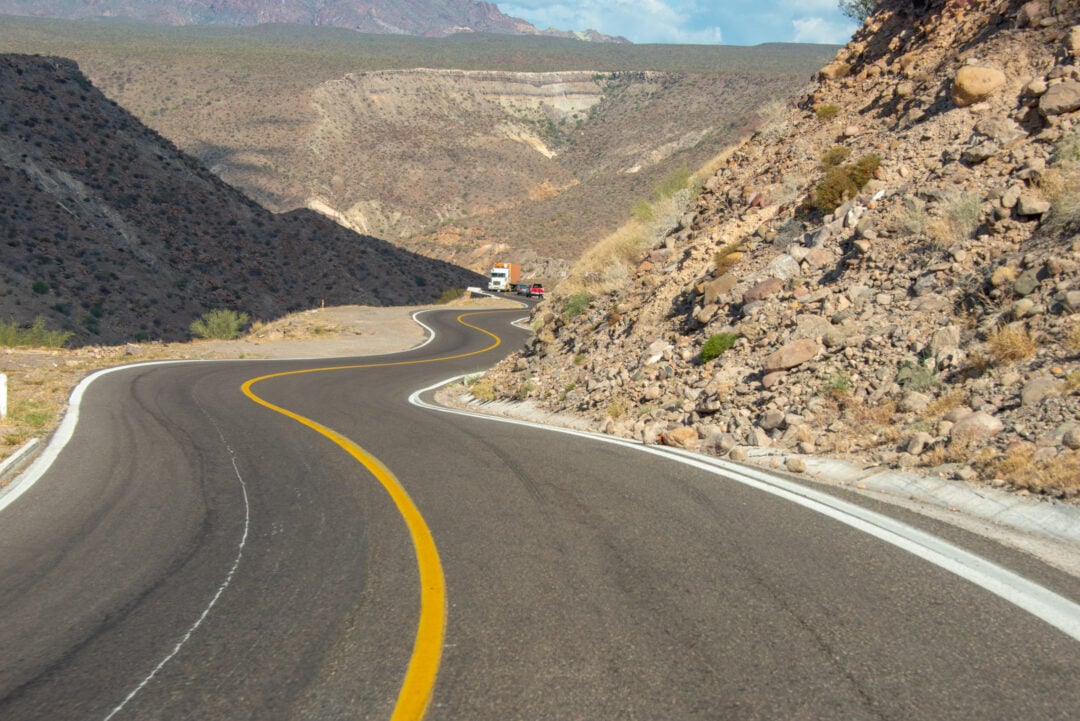
Right of way
On narrow roads, remember that uphill traffic has the right of way.
Headlights
Use your headlights in inclement weather to help other drivers see you. If you’re on a lightly-used road at night, your high beams will help you see wildlife (but make sure to promptly turn them off when you see approaching headlights, or it will create a dangerous situation by blinding the other driver). Don’t use your brights in bad weather, because they reflect off of heavy fog, snow, and rain, lessening your visibility.
